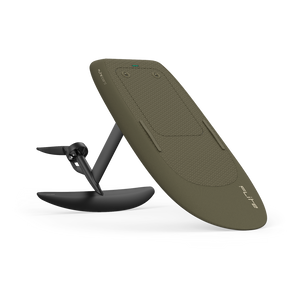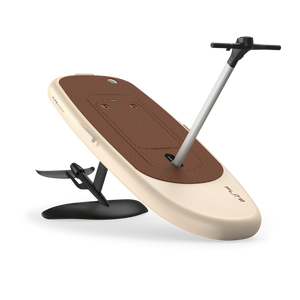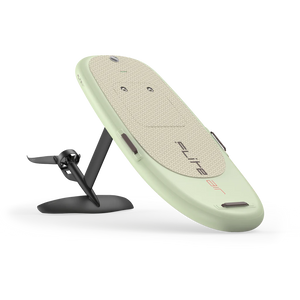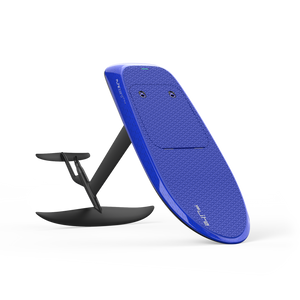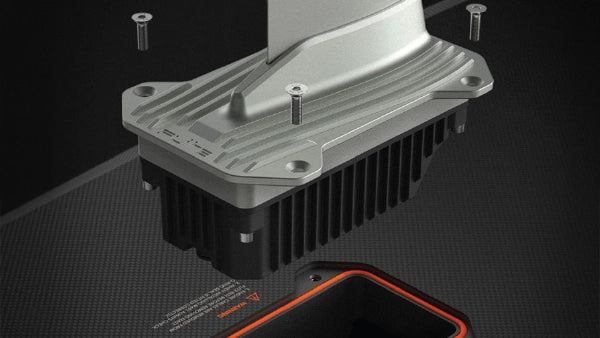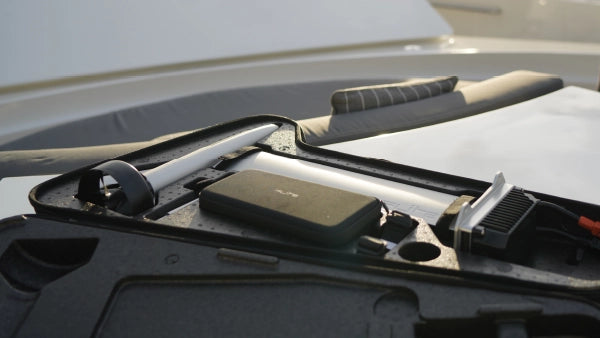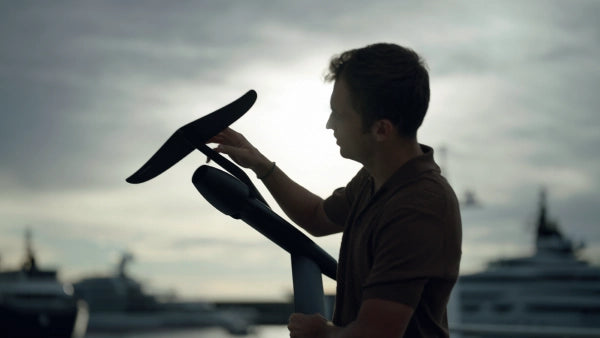Which Flitecell battery is best for me?
Flitecell is a marine grade eFoil battery, designed for performance and safety. It powers your Fliteboard eFoil and can be recharged using solar energy. Our range of Flitecells contain premium 21700 cells, as used in electric hypercars. These cells deliver a more aggressive ride and with additional thermal headroom, they won’t overheat. Because titanium has the highest strength-to-density ratio of any metal and is corrosion resistant, we’ve used it to house our premium cells.
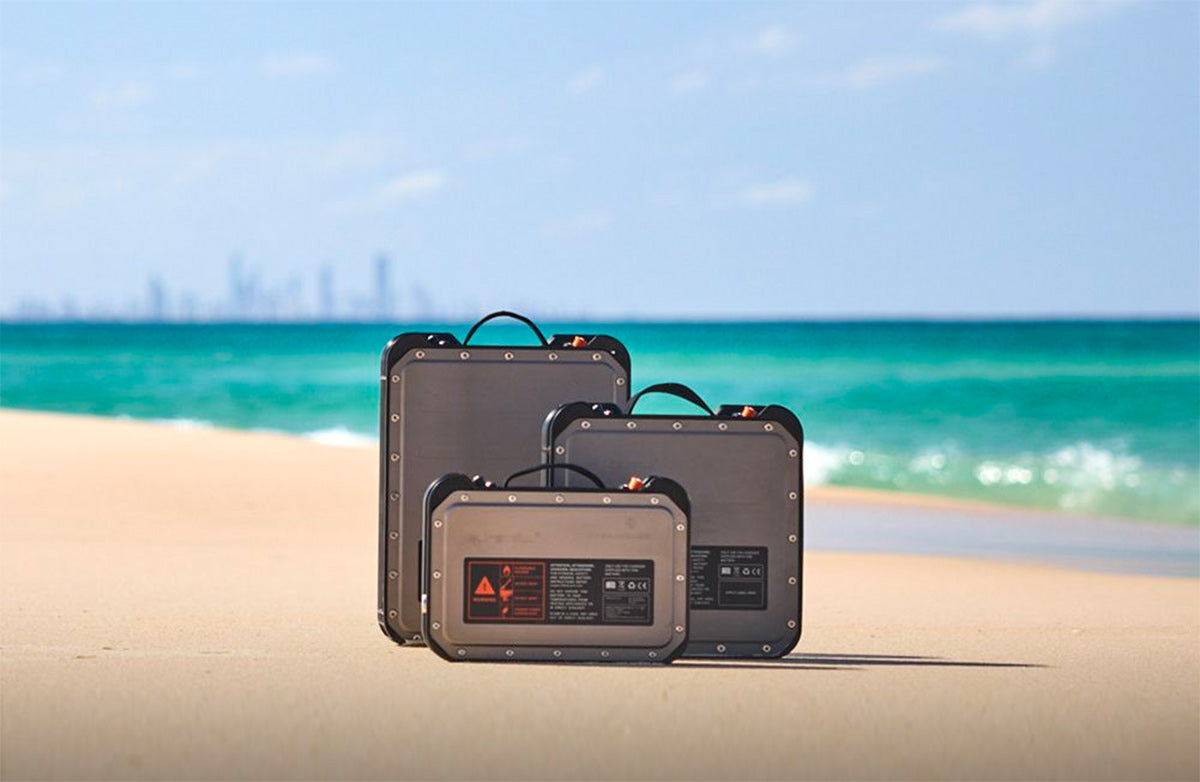
How long does a flite efoil battery last?
Flitecell battery life goes from 45 mins to 2.5 hours
Fliteboard owners have three choices to power their setup:
1. Flitecell Sport (up to 1.5 hours foil time)
2. Flitecell Explore (up to 2.5 hours foil time)
3. Flitecell Nano (up to 45 minutes foil time)
In order to help you make your decision about which battery will suit you best, we sat down with Simon Axmann, Flite Battery Engineer. Given his expertise, even Fliteboard owners who already have a Flitecell can learn something new. 
Flite: I know you’ve been instrumental in development and ridden the whole Flitecell range extensively, so which Flitecell do you recommend?
Simon: They're all amazing and have their own pros and cons. Ideally you should have all three of them, because they're all quite different. On a daily basis, I always try to go as light as possible to have an agile and responsive board, but of course that comes at the cost of range. Flitecell Nano is an absolutely amazing ride and it really makes a difference having a 13.7lbs battery that still offers full performance.
Flite: When do you use Flitecell Sport?
Simon: I ride with Flitecell Sport quite a lot, especially in the surf when I enter the water at one beach then ride around the corner a couple of miles to get to the break. Then I want to have some fun over there and make sure I come back with some juice left in the tank. You want to keep 10-15% just as a safety buffer in case it takes you a bit longer to get back in or go through the waves. And that's where a little bit of extra capacity comes in handy. I have managed to get over 20 miles of range and 1.5 hours ride time out of a Sport catching a lot of unpowered waves with True Glide prop. 
Flite: How about Flitecell Explore?
Simon: Flitecell Explore is a high capacity battery. Even though it adds a fair bit of weight, I still enjoy it as well, because that's the battery you want to put in when you're going exploring and traveling down the coast. You need an even bigger reserve just to make sure you can get back in case there's a current or wind or you just need a bit more power or you want to travel 10 miles down the coast and come back. Then always choose Explore to play it safe. But at 32lbs it is significantly heavier than the new Nano.
Flite: If you only had to pick one, which would it be?
Simon: That’s a difficult one. I'd probably go Sport, which is our standard battery, weighing 23.4lbs. Up until now (with the launch of Flitecell Nano) it was always the best value for money. But then for a bit more money you get the extra capacity of Flitecell Explore. So almost everyone upgrades, and that's common in e-bikes and all kinds of EVs that people pay that little bit of extra money to get the big battery. But when it comes to Fliteboard, they might not realize that the bigger battery actually takes away a fair bit of performance. So you really need to weigh up what you want. I think the more people get better at eFoiling, the more important it becomes that they take some weight out of the board to throw it around. That’s part of why it’s so exciting to have the Nano in market.
Flite: What advice would you give to lighter riders?
Simon: Obviously, for lightweight riders or smaller people that struggle to carry the board with the big battery, it's always good to go a size down just to make it a bit safer to get in and out of the water. So either Flitecell Nano or Sport. You can also carry the board down separately and place the battery in last. Just don’t put it in the sand. 
Flite: Any final words of wisdom?
Simon: To sum it all up, ideally you get all three of them. Then you have more choice depending on how you want to ride that day. And if you’re into performance you’ll probably find yourself using Flitcell Nano more than anything else, like me. Using that in the surf with some power off riding, it’s amazing how long that battery actually lasts. It's a small battery, but you can be out there for almost an hour and that was a bit of an unknown to us a few years ago - that you can get away with such a small battery and still ride until your legs are done. Don't underestimate the range and capacity of that great little battery.
If you’d like to get some performance tips from Simon, check out his interview about riding faster and carving harder here. You can also read about Flitecell’s market-leading battery safety here.
